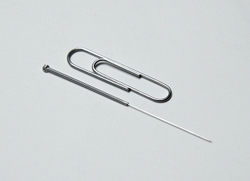Researchers at the University Medical School and Research Hospital in Ankara, Turkey have found that acupuncture given to patients with carpal tunnel syndrome, reduces symptom severity as well as swelling of the median nerve. A total of 45 arms belonging to 27 female patients, were randomly allocated to either an acupuncture or control group. All patients used a wrist splint at night. In addition, the acupuncture group received treatment two to three times a week for four weeks, giving ten sessions in total.
Symptom severity, hand function and electromyographic measurements improved in both groups, but the acupuncture group exhibited significantly higher improvements. Further, the cross-sectional area of the median nerve, which can increase due to swelling, significantly decreased in the acupuncture group; there was no change in the control group.
(The Acupuncture Effect on Median Nerve Morphology in Patients with Carpal Tunnel Syndrome: An Ultrasonographic Study. Evidence-Based Complementary & Alternative Medicine, 6 June 2017.)



 A systematic review by a team of New Zealand-based authors, supports the ability of acupuncture to alter pain-related functional connectivity in the brains of patients with musculoskeletal pain. Seven studies met the team’s inclusion criteria. All of them showed that acupuncture resulted in important changes to activation of brain areas which show abnormal connectivity in patients with chronic pain. The restoration of normal connectivity is associated with pain reduction. The studies looked at 191 patients with four conditions: osteoarthritis, chronic lower back pain, fibromyalgia and carpal tunnel syndrome.
A systematic review by a team of New Zealand-based authors, supports the ability of acupuncture to alter pain-related functional connectivity in the brains of patients with musculoskeletal pain. Seven studies met the team’s inclusion criteria. All of them showed that acupuncture resulted in important changes to activation of brain areas which show abnormal connectivity in patients with chronic pain. The restoration of normal connectivity is associated with pain reduction. The studies looked at 191 patients with four conditions: osteoarthritis, chronic lower back pain, fibromyalgia and carpal tunnel syndrome.